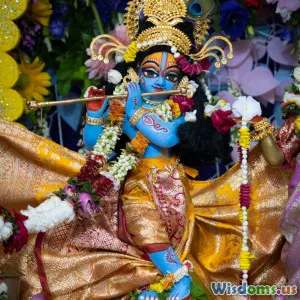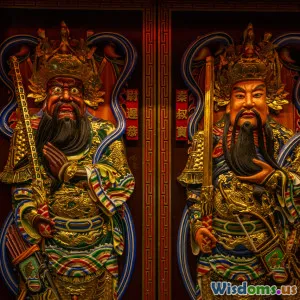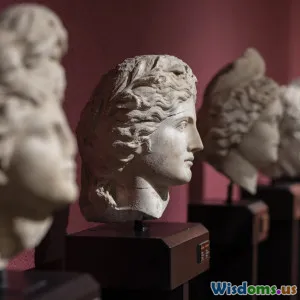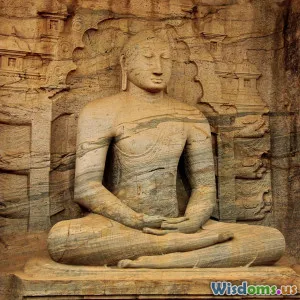
Decoding Mythology: Symbols and Their Meanings
5 min read Explore the rich tapestry of mythology through its symbols and what they represent across various cultures. (0 Reviews)
Decoding Mythology: Symbols and Their Meanings
Mythology has always been a fascinating subject, providing insights into the values, beliefs, and fears of ancient cultures. At the heart of these myths lie symbols—powerful images that convey complex ideas and emotions. Understanding these symbols can offer a deeper appreciation of the myths they inhabit and illuminate the human experience across different eras.
The Role of Symbols in Mythology
Symbols serve as shortcuts to understanding narratives that might otherwise be complex and convoluted. They can encapsulate entire stories, emotions, or moral lessons in a single image or concept. For instance, the Greek god Hermes is often depicted with his winged sandals, symbolizing speed and agility. This representation not only identifies Hermes but also conveys his role as a messenger and a guide for souls.
The Significance of Common Symbols
-
The Serpent: In many cultures, serpents symbolize both creation and destruction. In Judeo-Christian tradition, the serpent represents temptation and sin, while in Mesoamerican cultures, serpents can symbolize fertility and rebirth, as seen in the feathered serpent deity Quetzalcoatl.
-
The Tree: Trees often symbolize life, growth, and interconnectedness. The World Tree, or Yggdrasil in Norse mythology, connects the nine realms and represents the cycle of life and death.
-
The Sun and Moon: These celestial bodies frequently represent duality; the sun often symbolizes life, energy, and masculinity, while the moon embodies intuition, femininity, and the subconscious. This duality is especially evident in many Native American and Egyptian myths.
-
The Labyrinth: Found in Greek mythology, the labyrinth symbolizes the complex journey of life, filled with challenges and the pursuit of enlightenment, as illustrated by the tale of the Minotaur and Theseus.
Cultural Context of Symbols
The meanings of symbols can vary dramatically across cultures. For example, the lotus flower is revered in Hinduism and Buddhism as a symbol of purity and spiritual awakening. In contrast, in some Western cultures, it may simply represent beauty. Understanding these variations is crucial to decoding the messages embedded in mythological narratives.
Examples of Symbol Interpretation
-
The Phoenix: This mythical bird, which is reborn from its ashes, symbolizes resurrection and renewal across various cultures, including Greek and Egyptian mythology. Its image inspires hope and represents the cyclical nature of life.
-
The Chalice: Common in Christian symbolism, the chalice represents the blood of Christ but can also be found in various forms in other cultures, symbolizing nourishment and the sacredness of life.
Modern Relevance of Mythological Symbols
In contemporary society, these symbols continue to resonate. They appear in literature, film, and art, often reinterpreted to reflect modern issues and themes. For instance, the use of labyrinths in modern storytelling can symbolize the complex nature of human psychology or societal structures.
Practical Applications
Understanding these symbols can enhance your appreciation for literature and art. When engaging with a story, consider the symbols present and their possible meanings. Ask yourself:
- What does this symbol represent within the context of the story?
- How does it relate to the characters’ journeys?
- What cultural significance might it hold outside the narrative?
By doing so, you can unlock deeper layers of meaning and draw connections to your own life experiences.
Conclusion
Decoding mythology through its symbols enriches our understanding of ancient cultures and their narratives. By recognizing the powerful meanings behind these symbols, we can gain insights into our own lives and the collective human experience. Mythology is not just a relic of the past; it is a living tapestry that continues to inform and inspire. So, the next time you encounter a myth, take a moment to ponder the symbols within it and what they might reveal about humanity's timeless quest for meaning.
Rate the Post
User Reviews
Popular Posts





















